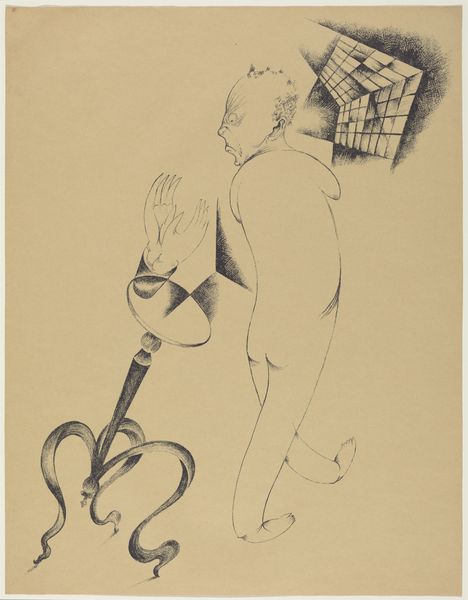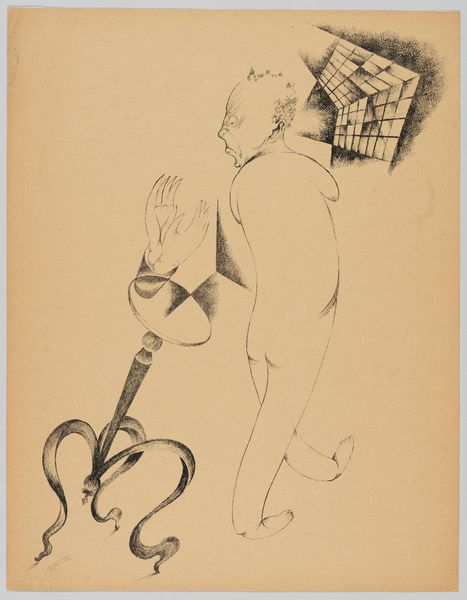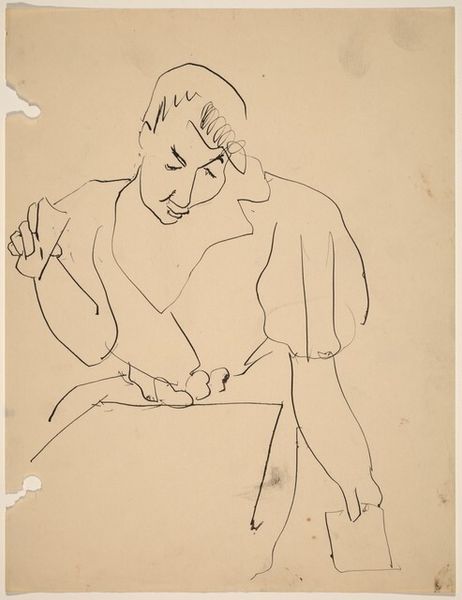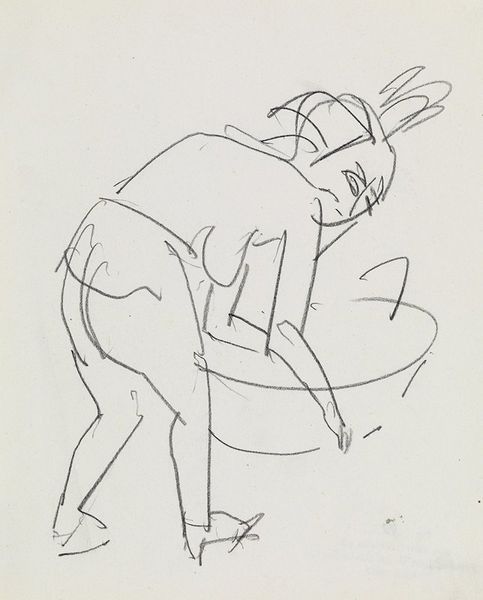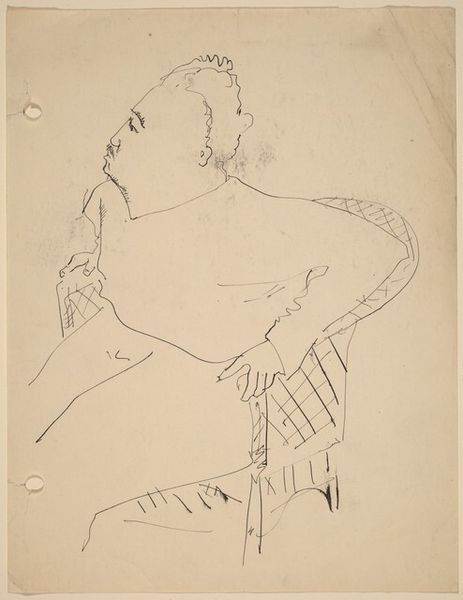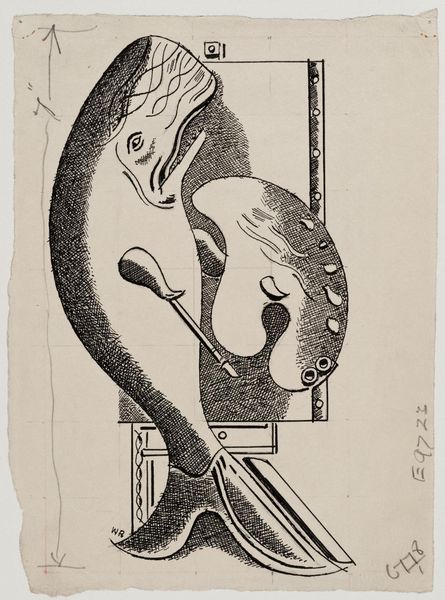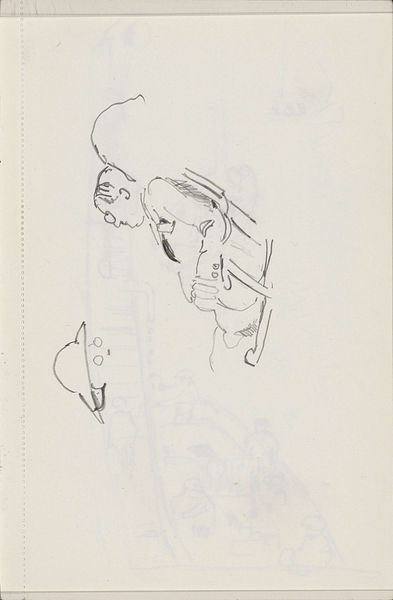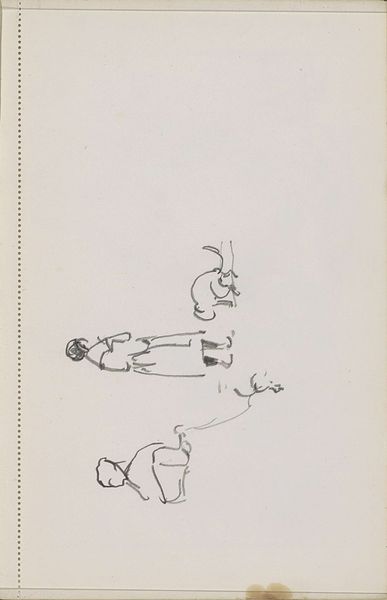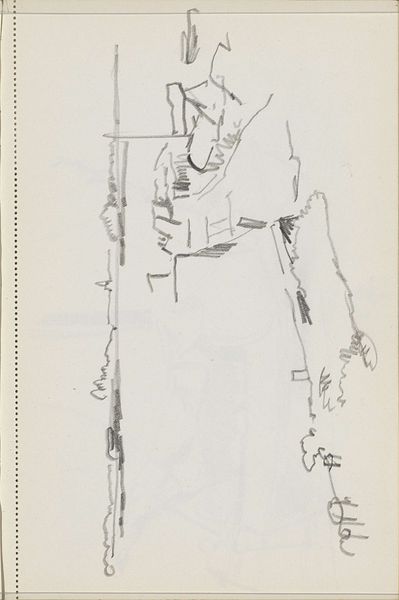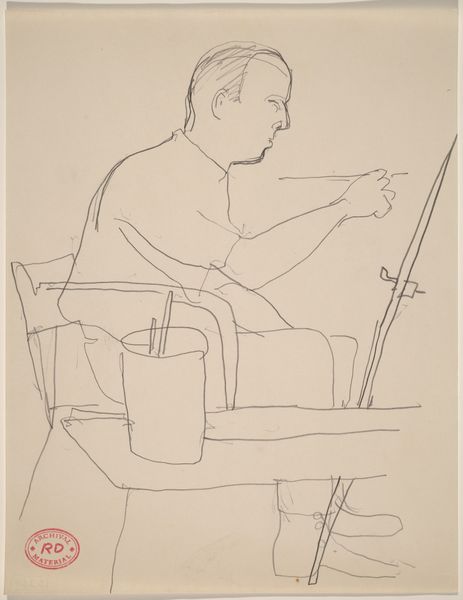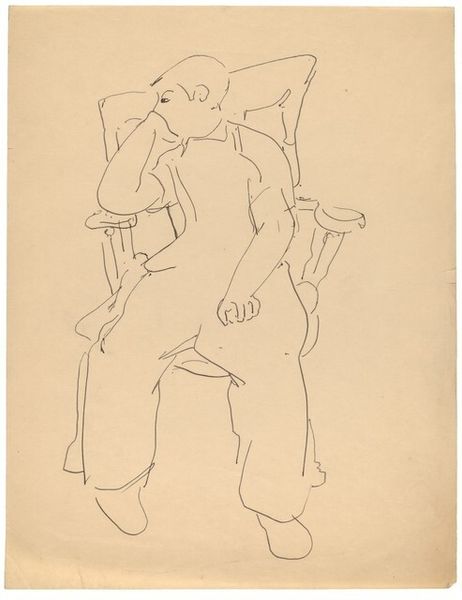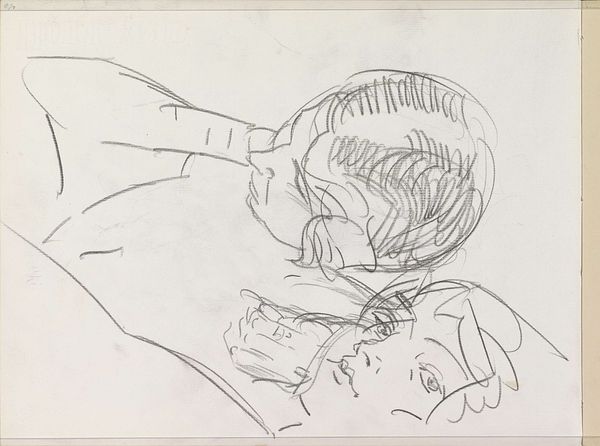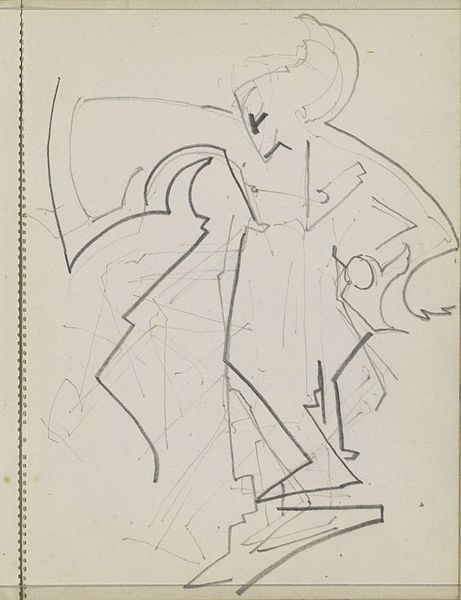
drawing, print
#
portrait
#
drawing
# print
#
caricature
#
caricature
#
figuration
#
line
Dimensions: image: 416 x 270 mm sheet: 575 x 442 mm
Copyright: National Gallery of Art: CC0 1.0
Curator: This print, made around 1936 by Stephen Pope Dimitroff, is called "Motor Repair." It seems quite straightforward, a line drawing focusing on labor and machinery of the period. What strikes you initially about it? Editor: It hits me with such a serene, almost meditative vibe. You've got these bold, simplified lines rendering complex machinery, but there's also an ethereal quality to the whole thing, right? I mean, look at the way the figures are drawn, especially that secondary profile floating in the background. They’re almost like ghosts in the machine, detached yet undeniably part of the process. Curator: Yes, the simplified line work is key here. It flattens the image, which was a prevalent method in social realism. It's about the everyman—or everywoman—performing essential labor during the Depression era. We should observe, though, it also carries something of a caricature spirit. Notice the woman's exaggerated features: pronounced jaw, almost harsh gaze? Editor: Oh, for sure. It’s a worker portrait that almost satirizes…but subtly? Like a wry acknowledgment of the endless grind. Makes you think about the Fordist assembly line and the de-personalization of labor that Chaplin so famously skewered. Also, just technically, the line work feels so sure. Like one continuous, confident stroke—easy, but like she really means what she is about. Curator: Well, Dimitroff clearly had an agenda beyond technical prowess. During this period, many artists saw their work as a tool for social commentary. We can see in his aesthetic decisions – simplification of form and emphasizing specific aspects of the figures – which allows him to draw out commentary about industrial work through figuration in a unique approach. Editor: Exactly! It’s like the machine becomes a character itself—imposing, demanding. So, thinking about how the public received it at the time. Did they appreciate the… ambivalence, or did it come across as a straight up criticism? Curator: Reactions varied. Some appreciated the honest depiction of working-class life; however, others felt the stylistic choices veered into mocking the common man. This print raises crucial discussions surrounding representation. Does it fairly depict people, or reinforce stereotypes? Editor: Hmmm, it’s stayed with me, hasn’t it? Making me wrestle with this potent moment when people were finding new languages and new rhythms with all these brand new metal contraptions. Curator: I find its ability to keep engaging us generations later so worthwhile. Let’s move on to the next piece!
Comments
No comments
Be the first to comment and join the conversation on the ultimate creative platform.
